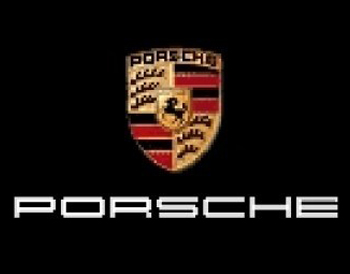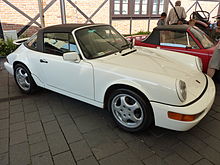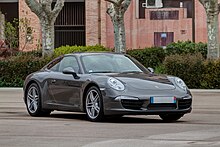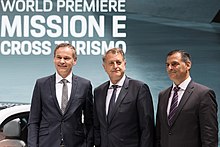To meet your Porsche essential servicing needs, Porsche service center Malaysia stays open while rehearsing social removing and disinfection for the wellbeing and security of our group alongside yours.
During this time, we are giving choices like complimentary pick-pp and delivery and No Contact Service Drop-Off for the adjusting of your Porsche with accommodation and negligible contact.
If it's not too much trouble, be consoled that our colleagues are wearing defensive gloves and giving insurance of the inside of your vehicles all with legitimate sterilization.
For the wellbeing of our Guests just as our Team Members who are serving you, we ask that you mercifully wear a facial covering in case you are not completely immunized according to the MOH rules.
Techtrics Auto Luxury vehicles request auto consideration that is best in class—and that is the thing that Malaysia drivers will discover at our Porsche service center. Porsche vehicles are everything except customary, so our plant prepared service group performs Porsche-ensured service, from examinations to routine support to complex fixes. While every one of our services are acted on time, our group never relinquishes quality or meticulousness. To assist with protecting the accuracy tuning of your Porsche, keep up with your vehicle with our approved Porsche service center.
Porsche Services and Repairs
At Porsche Service Center (Malaysia), we play out a scope of Porsche services and Porsche auto fixes. All of our Porsche services are done by particular mechanics utilizing real OEM parts, which give the ideal fit and execution your vehicle needs to run at its best. We offer the accompanying services at reasonable valuing and even incorporate service specials, so you can appreciate serious estimating
- Oil changes
- Oil filter replacement
- Transmission repairs
- PDK transmission repairs
- Brake inspections
- Brake replacement
- Suspension repairs
- Check engine lights
- Fuel & cooling systems
- Battery replacement
- Fluid flush
- Hybrid repair
- Classic car repair
- And more!
Our service department is open for pre-booked appointments with safety measures in place. Please call our team on 012-449 6696.
Porsche Workshop Specialist Malaysia – Porsche Workshop provides alternative one-stop, full-range of European car service & repair in Malaysia.
TECHTRICS AUTO SDN BHD
No. 63-A, Jalan TPK 2/8, Taman Perindustrian Kinrara,
47180 Puchong, Selangor Darul Ehsan, Malaysia
Origin
Ferdinand Porsche founded the company called "Dr. Ing. h. c. F. Porsche GmbH"[3] with Adolf Rosenberger[4] and Anton Piëch in 1931.[5] The main offices was at Kronenstraße 24 in the centre of Stuttgart.[6] Initially, the company offered motor vehicle development work and consulting,[3] but did not build any cars under its own name. One of the first assignments the new company received was from the German government to design a car for the people; that is, a Volkswagen.[3] This resulted in the Volkswagen Beetle, one of the most successful car designs of all time.[7] The Porsche 64 was developed in 1939 using many components from the Beetle.[3]
During World War II,[8] Volkswagen production turned to the military version of the Volkswagen Beetle, the Kübelwagen,[8] 52,000 produced, and Schwimmwagen,[8] 15,584 produced.[9] Porsche produced several designs for heavy tanks during the war, losing out to Henschel & Son in both contracts that ultimately led to the Tiger I and the Tiger II. However, not all this work was wasted, as the chassis Porsche designed for the Tiger I was used as the base for the Elefant tank destroyer. Porsche also developed the Maus super-heavy tank in the closing stages of the war, producing two prototypes.[10] Ferdinand Porsche's biographer, Fabian Müller, wrote that Porsche had thousands of people forcibly brought to work at their factories during the war. The workers wore the letter "P" on their clothing at all times. It stood not for "Porsche," but for "Poland."[11]
At the end of World War II in 1945, the Volkswagen factory at KdF-Stadt fell to the British. Ferdinand lost his position as chairman of the board of management of Volkswagen, and Ivan Hirst, a British Army major, was put in charge of the factory. (In Wolfsburg, the Volkswagen company magazine dubbed him "The British Major who saved Volkswagen".)[12] On 15 December of that year, Ferdinand was arrested for war crimes, but not tried. During his 20-month imprisonment, Ferdinand Porsche's son, Ferry Porsche, decided to build his own car, because he could not find an existing one that he wanted to buy. He also had to steer the company through some of its most difficult days until his father's release in August 1947.[13] The first models of what was to become the 356 were built in a small sawmill in Gmünd, Austria.[13] The prototype car was shown to German auto dealers, and when pre-orders reached a set threshold, production (with aluminum body) was begun by Porsche Konstruktionen GesmbH, founded by Ferry and Louise. Many regard the 356 as the first Porsche simply because it was the first model sold by the fledgling company. After production of the 356 was taken over by the father's Dr. Ing. h.c. F. Porsche GmbH in Stuttgart in 1950, Porsche commissioned a Zuffenhausen-based company, Reutter Karosserie, which had previously collaborated with the firm on Volkswagen Beetle prototypes, to produce the 356's steel body. In 1952, Porsche constructed an assembly plant (Werk 2) across the street from Reutter Karosserie; the main road in front of Werk 1, the oldest Porsche building, is now known as Porschestrasse.[14] The 356 was road certified in 1948.
Porsche's company logo stems from the coat of arms of the Free People's State of Württemberg of Weimar Germany of 1918–1933, which had Stuttgart as its capital. (The Bundesland of Württemberg-Hohenzollern used the same arms from 1945 to 1952, while Stuttgart during these years operated as the capital of adjacent Württemberg-Baden.) The arms of Stuttgart appear in the middle of the logo as an inescutcheon, since the company had its headquarters in Stuttgart. The heraldic symbols, combined with the texts "Porsche" and "Stuttgart", do not form a conventional coat of arms, since heraldic achievements never spell out the name of the armiger nor the armiger's home-town in the shield.
Württemberg-Baden and Württemberg-Hohenzollern both became part of the present land of Baden-Württemberg in 1952 after the political consolidation of West Germany in 1949, but the old design of the arms of Württemberg lives on in the Porsche logo. On 30 January 1951, not long before the formation of Baden-Württemberg, Ferdinand Porsche died from complications following a stroke.
Developments
In post-war Germany, parts were generally in short supply, so the 356 automobile used components from the Volkswagen Beetle, including the engine case from its internal combustion engine, transmission, and several parts used in the suspension. The 356, however, had several evolutionary stages, A, B, and C, while in production, and most Volkswagen-sourced parts were replaced by Porsche-made parts. Beginning in 1954 the 356s engines started utilizing engine cases designed specifically for the 356. The sleek bodywork was designed by Erwin Komenda, who also had designed the body of the Beetle. Porsche's signature designs have, from the beginning, featured air-cooled rear-engine configurations (like the Beetle), rare for other car manufacturers, but producing automobiles that are very well balanced.
In 1964, after a fair amount of success in motor-racing with various models including the 550 Spyder, and with the 356 needing a major re-design, the company launched the Porsche 911: another air-cooled, rear-engined sports car, this time with a six-cylinder "boxer" engine. The team to lay out the body shell design was led by Ferry Porsche's eldest son, Ferdinand Alexander Porsche (F. A.). The design phase for the 911 caused internal problems with Erwin Komenda, who led the body design department until then. F. A. Porsche complained Komenda made unauthorized changes to the design. Company leader Ferry Porsche took his son's drawings to neighbouring chassis manufacturer Reuter. Reuter's workshop was later acquired by Porsche (so-called Werk 2). Afterward, Reuter became a seat manufacturer, today known as Keiper-Recaro.
The design office gave sequential numbers to every project (See Porsche type numbers), but the designated 901 nomenclature contravened Peugeot's trademarks on all 'x0x' names, so it was adjusted to 911. Racing models adhered to the "correct" numbering sequence: 904, 906, 908. The 911 has become Porsche's most well-known model – successful on the race-track, in rallies, and in terms of road car sales. It remains in production; however, after several generations of revision, current-model 911s share only the basic mechanical configuration of a rear-engined, six-cylinder coupé, and basic styling cues with the original car. A cost-reduced model with the same body, but with a 356-derived four-cylinder engine, was sold as the 912.
In 1972, the company's legal form was changed from Kommanditgesellschaft (KG), or limited partnership, to Aktiengesellschaft (AG), or public limited company, because Ferry Porsche came to believe the scale of the company outgrew a "family operation", after learning about Soichiro Honda's "no family members in the company" policy at Honda. This led to the establishment of an executive board with members from outside the Porsche family, and a supervisory board consisting largely of family members. With this change, most family members in the operation of the company, including F. A. Porsche and Ferdinand Piëch, departed from the company.
F. A. Porsche founded his own design company, Porsche Design, which is renowned for exclusive sunglasses, watches, furniture, and many other luxury articles. Louise's son and Ferry's nephew Ferdinand Piëch, who was responsible for mechanical development of Porsche's production and racing cars (including the very successful 911, 908 and 917 models), formed his own engineering bureau, and developed a five-cylinder-inline diesel engine for Mercedes-Benz. A short time later he moved to Audi (used to be a division, then a subsidiary, of Volkswagen), and pursued his career through the entire company, ultimately becoming the chairman of Volkswagen Group.
The first chief executive officer (CEO) of Porsche AG was Ernst Fuhrmann, who had been working in the company's engine development division. Fuhrmann was responsible for the so-called Fuhrmann-engine, used in the 356 Carrera models as well as the 550 Spyder, having four overhead camshafts instead of a central camshaft with pushrods, as in the Volkswagen-derived serial engines. He planned to cease the 911 during the 1970s and replace it with the V8-front engined grand sportswagon 928. As we know today, the 911 outlived the 928 by far. Fuhrmann was replaced in the early 1980s by Peter W. Schutz, an American manager and self-proclaimed 911 aficionado. He was then replaced in 1988 by the former manager of German computer company Nixdorf Computer AG, Arno Bohn, who made some costly miscalculations that led to his dismissal soon after, along with that of the development director, Dr. Ulrich Bez, who was formerly responsible for BMW's Z1 model, and was CEO of Aston Martin from 2000 to 2013.[15]
In 1990, Porsche drew up a memorandum of understanding with Toyota to learn and benefit from Japanese lean manufacturing methods. In 2004 it was reported that Toyota was assisting Porsche with hybrid technology.[16]
Following the dismissal of Bohn, Heinz Branitzki, a longtime Porsche employee, was appointed as interim CEO. Branitzki served in that position until Wendelin Wiedeking became CEO in 1993. Wiedeking took over the chairmanship of the board at a time when Porsche appeared vulnerable to a takeover by a larger company. During his long tenure, Wiedeking transformed Porsche into a very efficient and profitable company.
Ferdinand Porsche's nephew, Ferdinand Piëch, was chairman and CEO of the Volkswagen Group from 1993 to 2002 and is chairman of the Volkswagen AG Supervisory Board since then. With 12.8 percent of the Porsche SE voting shares, he also remains the second-largest individual shareholder of Porsche SE after his cousin, F. A. Porsche, which had 13.6 percent.
Porsche's 2002 introduction of the Cayenne also marked the unveiling of a new production facility in Leipzig, Saxony, which once accounted for nearly half of Porsche's annual output. In 2004, production of the 456 kilowatts (620 PS; 612 bhp) Carrera GT commenced in Leipzig, and at EUR 450,000 ($440,000 in the United States) it was the most expensive production model Porsche ever built.
In mid-2006, after years of the Boxster (and later the Cayenne) as the best selling Porsche in North America, the 911 regained its position as Porsche's best-seller in the region. The Cayenne and 911 have cycled as the top-selling model since. In Germany, the 911 outsells the Boxster/Cayman and Cayenne.[17]
In May 2011, Porsche Cars North America announced plans to spend $80–$100 million, but will receive about $15 million in economic incentives to move their North American headquarters from Sandy Springs, a suburb of Atlanta, to Aerotropolis, Atlanta, a new mixed-use development on the site of the old Ford Hapeville plant adjacent to Atlanta's airport.[18] Designed by architectural firm HOK, the headquarters will include a new office building and test track.[19][20][21] The facility will be known by its new address, One Porsche Drive.
In October 2017, Porsche Cars North America announced the launch of introduced Porsche Passport, a new sports car and SUV subscription program. This new offering allows consumers to access Porsche vehicles through subscribing to the service, rather than owning or leasing a vehicle. The Porsche Passport service is available initially in Atlanta.[22][23]
During the COVID-19 pandemic, in March 2020, Porsche suspended its manufacturing in Europe for two weeks, "By taking this step, the sports car manufacturer is responding to the significant acceleration in the rate of infection caused by the coronavirus and the resultant measures implemented by the relevant authorities."[24]
Relationship with Volkswagen
The company has always had a close relationship with, initially, the Volkswagen (VW) marque, and later, the Volkswagen Group (which also owns Audi AG), because the first Volkswagen Beetle was designed by Ferdinand Porsche.
The two companies collaborated in 1969 to make the VW-Porsche 914 and 914-6, whereby the 914-6 had a Porsche engine, and the 914 had a Volkswagen engine. Further collaboration in 1976 resulted in the Porsche 912E (US only) and the Porsche 924, which used many Audi components, and was built at Audi's Neckarsulm factory, which had been NSU's. Porsche 944s were also built there,[25] although they used far fewer Volkswagen components. The Cayenne, introduced in 2002, shares its chassis with the Volkswagen Touareg and the Audi Q7, which is built at the Volkswagen Group factory in Bratislava, Slovakia.
Corporate restructuring
Porsche SE was created in June 2007 by renaming the old Dr. Ing. h.c. F. Porsche AG, and became a holding company for the families' stake in Porsche Zwischenholding GmbH (50.1%) (which in turn held 100% of the old Porsche AG) and Volkswagen AG (50.7%).[26][27] At the same time, the new Dr. Ing. h.c. F. Porsche AG (Porsche AG) was created for the car manufacturing business.
In August 2009, Porsche SE and Volkswagen AG reached an agreement that the car manufacturing operations of the two companies would merge in 2011, to form an "Integrated Automotive Group".[28][29] The management of Volkswagen AG agreed to 50.76% of Volkswagen AG being owned by Porsche SE in return for Volkswagen AG management taking Porsche SE management positions (in order for Volkswagen management to remain in control), and for Volkswagen AG acquiring ownership of Porsche AG.
As of the end of 2015, the 52.2% control interest in VW AG is the predominant investment by Porsche SE, and Volkswagen AG in turn controls brands and companies such as Volkswagen, Audi, SEAT, Škoda, Bentley, Bugatti, Lamborghini, Porsche AG, Ducati, VW Commercial Vehicles, Scania, MAN, as well as Volkswagen Financial Services.[30]
Dr. Ing. h.c. F. Porsche AG (which stands for Doktor Ingenieur honoris causa Ferdinand Porsche Aktiengesellschaft), as a 100% subsidiary of VW AG, is responsible for the actual production and manufacture of the Porsche automobile line. The company currently produces Porsche 911,[31] Boxster and Cayman sports cars, the Cayenne and Macan sport utility vehicles and the four-door Panamera.
Subsidiaries
Porsche AG has a 29% share in German engineering and design consultancy Bertrandt AG[32][33] and 81.8% of Mieschke Hofmann und Partner.[34] In 2018, Porsche acquired a 10% minority shareholding stake of the Croatian electric sportscar manufacturer Rimac Automobili to form a development partnership.[35][36]
Wholly owned subsidiaries of Porsche AG include Porsche Consulting GmbH.
Production and sales
The headquarters and main factory are located in Zuffenhausen, a district in Stuttgart, but the Cayenne and Panamera models are manufactured in Leipzig, Germany, and parts for the SUV are also assembled in the Volkswagen Touareg factory in Bratislava, Slovakia.[37] Boxster and Cayman production was outsourced to Valmet Automotive in Finland from 1997 to 2011, and in 2012 production moved to Germany.[38] Since 2011, the area of the Zuffenhausen plant has more than doubled, from 284,000 to 614,000 square metres, as a result of purchasing the former Layher, Deltona and Daimler sites, among others.[39][40]
In 2015, Porsche reported selling a total of 218,983 cars, 28,953 (13.22%) as domestic German sales, and 190,030 (86.78%) internationally.[41]
The company has been highly successful in recent times, and indeed claims to have the highest profit per unit sold of any car company in the world.[42] Table of profits (in millions of euros) and number of cars produced. Figures from 2008/9 onwards were not reported as part of Porsche SE.[43]
On 11 May 2017, Porsche built the one-millionth 911. An Irish green Carrera S was built for the celebration, and it will be taken on a global tour before becoming a permanent exhibit at the Porsche Museum in Stuttgart.[44]
In August 2021, Porsche has confirmed that it'll be setting up a production plant in Malaysia, the first country outside of Europe.[45] Local assembly will be handled by Porsche Malaysia's partner, Sime Darby, which has been the official distributor of the Stuttgart-based company in Malaysia since 2010.
https://goo.gl/maps/v6PZSuimvDstvWHc7
We are independent European vehicle workshop
TECHTRICS AUTO SDN BHD
No. 63-A, Jalan TPK 2/8, Taman Perindustrian Kinrara, 47180 Puchong, Selangor Darul Ehsan, Malaysia.
Driving Direction (Click Here)
Porsche Service Workshop Malaysia
OPENING HOURS
MONDAY – FRIDAY: 9:00AM – 6:00PM
SATURDAY: 9:00AM – 1:00PM
SUNDAY: CLOSED














